

Some 44% of the world’s population (and almost 40% of America’s) lives within 100 miles of one shoreline or another. According to C40, a network of international megacities concerned with climate change, more than 570 coastal communities around the world face a projected sea level rise of more than a foot-and-a-half by 2050.
This puts at least 800 million people at risk of being affected, either permanently or during storm surges. (Besides homes and businesses that could be lost, many World Heritage sites and other cultural treasures could be threatened. These are 28 amazing places that could be underwater by 2050.)
Many factors are likely to contribute to catastrophic flooding: the melting of the polar ice caps and other land-based ice (like glaciers); warming seas (water expands as it heats); irregularities in the moon’s orbit — so-called “moon wobble” — projected to cause higher-than-usual tides in coming decades; the erosion of beaches; the sinking of cities as groundwater is depleted; the inadequacy of drainage systems….
To determine which cities could see the largest segment of their population displaced by rising seas in the coming decades, 24/7 Wall St. reviewed projections of sea level rise and related data from a variety of sources, including C40, Earth.org, Climate Central, FloodMap, ClimateLinks, the World Bank, the Union of Concerned Scientists’ Climate Hot Map, Nature, and the National Oceanic and Atmospheric Administration’s National Ocean Service.
From among the cities considered most at risk, we chose the 25 metropolises and metropolitan areas with the largest populations, using the latest data from World Population Review. (They’re too small to be included here, but these are 20 islands that will disappear in your lifetime.)
According to some estimates, as many as 80% of the people who would be most affected live in East and Southeast Asia — and indeed, some 18 of the 25 cities on our list are in those areas, including eight in China (counting Hong Kong).
Click here to see 25 cities where rising seas could leave millions homeless.
Most of the cities on this list are addressing impending flooding with projects to protect their coastlines by erecting sea walls and barriers, among other strategies. Whether these measures will be sufficient, and be in place in time, remains to be seen.
25. Suzhou, China
> Population (2021): 7.43 million
This major economic center, located in the Yangtze River Delta region, just west of Shanghai has numerous waterfronts, on Lake Tai and a number of smaller lakes, as well as along the Yangtze. It is considered to be at high risk for flooding, especially during the region’s increasingly strong and frequent storm surges.
[in-text-ad]
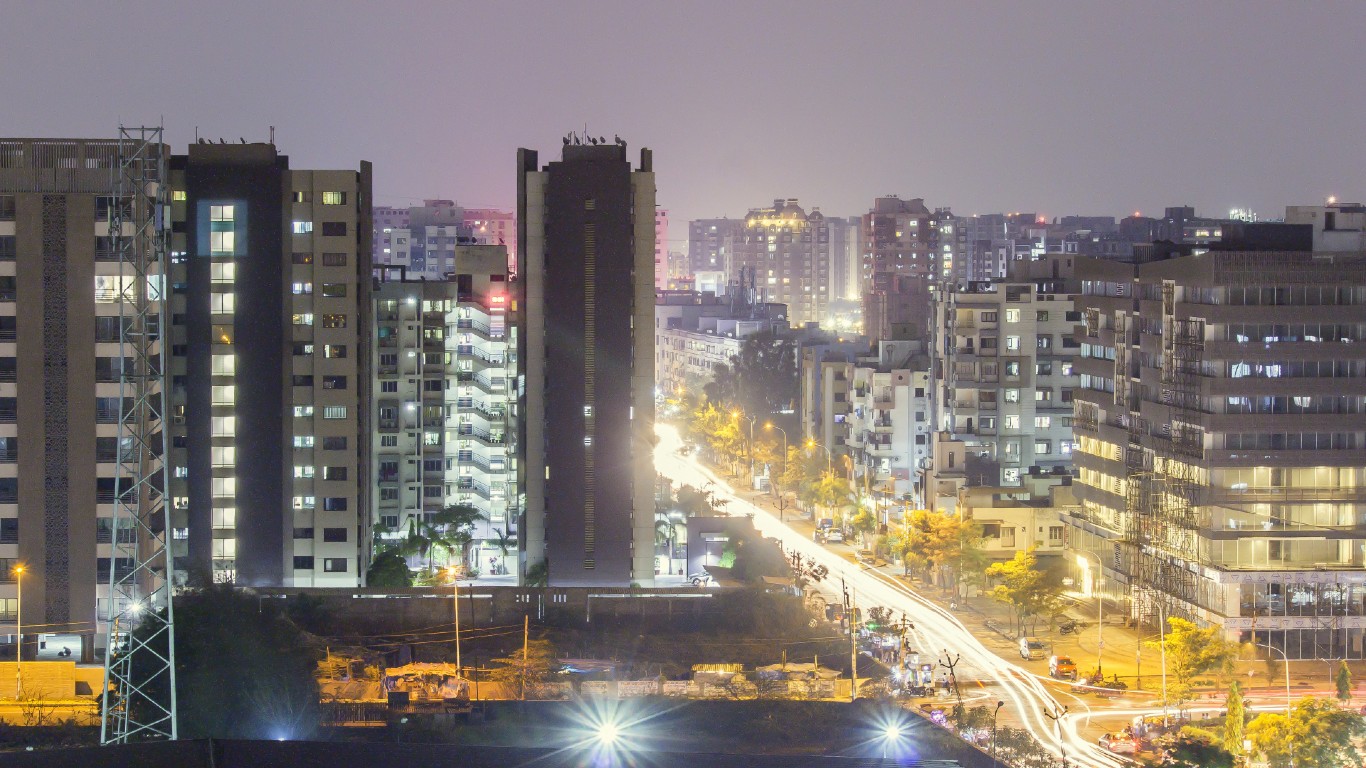
24. Surat, India
> Population (2021): 7.49 million
“Indian city of Surat anticipates worst effects of climate change,” read the headline on a story seven years ago in The Guardian. A crowded city with a fast-growing population, Surat is a center for India’s diamond, textiles, and petrochemical businesses. It is estimated that as many as five million of its residents could be displaced by rising seas by the end of this century.
23. Hong Kong, China
> Population (2021): 7.6 million
Storm surges caused by frequent typhoons on the South China Sea are a major concern here, as is the sea level rise of about two-thirds of a foot by 2040 predicted by the Hong Kong Observatory. The situation isn’t helped by the fact that developers are building massive new residential units in low-lying areas considered by analysts to be at particular risk of flooding.
22. Hangzhou, China
> Population (2021): 7.85 million
A major electronics and high-tech center southwest of Shanghai (it’s the headquarters of Alibaba, known as the Amazon of China), Hangzhou sits on the Qiantang River, which feeds into Hangzhou Bay. The water level in the bay has risen about seven inches since 1978, and cyclones and inland flooding are common in the area.
[in-text-ad-2]
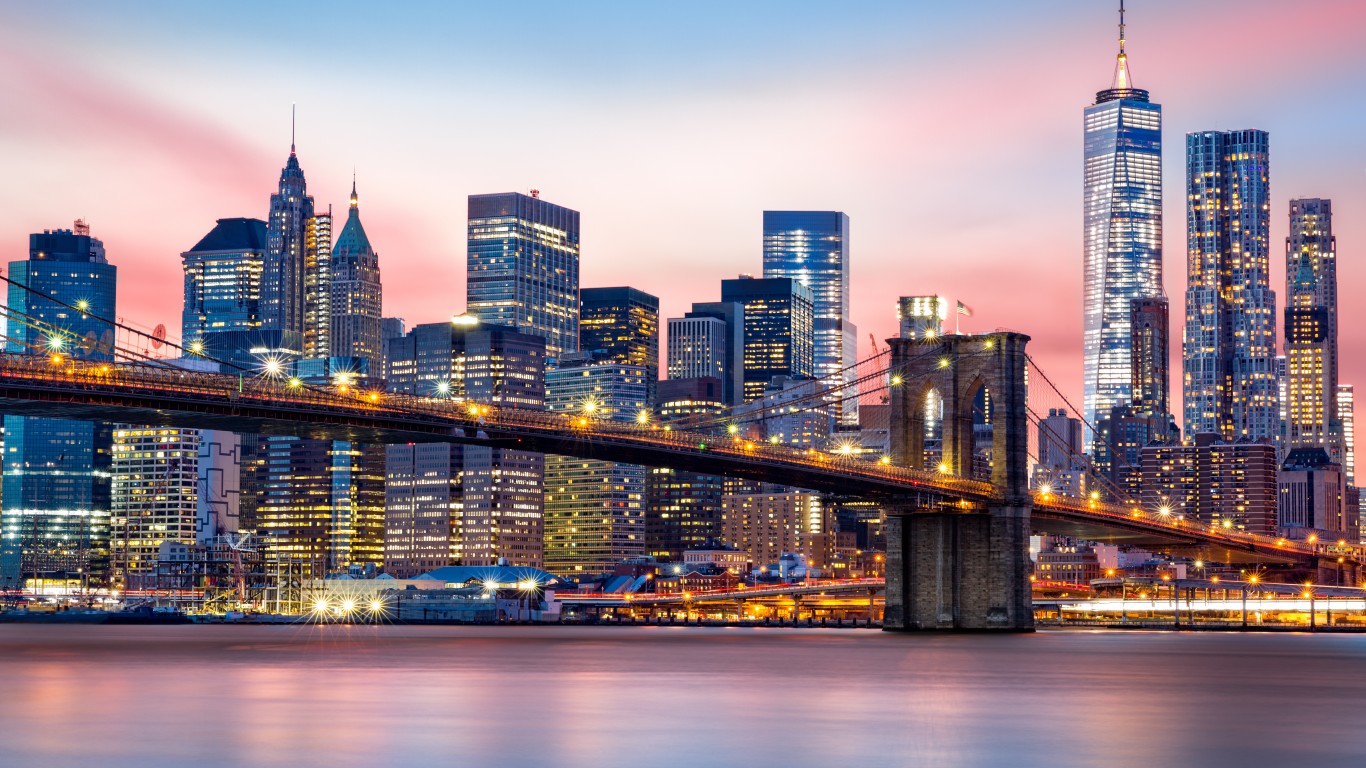
21. New York, United States
> Population (2021): 8.23 million
According to a study by the New York Economic Development Corporation, by 2050, 37% of the buildings in Lower Manhattan will be at risk from storm surges, and by 2100 that number will rise to almost 50% — and 20% of the area’s streets could be subject to daily flooding. (In 2012, Hurricane Sandy inundated 17% of the city, claiming 44 lives.) A mitigation plan involving flood barriers, artificial sand bars, and a seawall has been formulated, but New York has 520 miles of coastline, so the project will be formidable to realize.
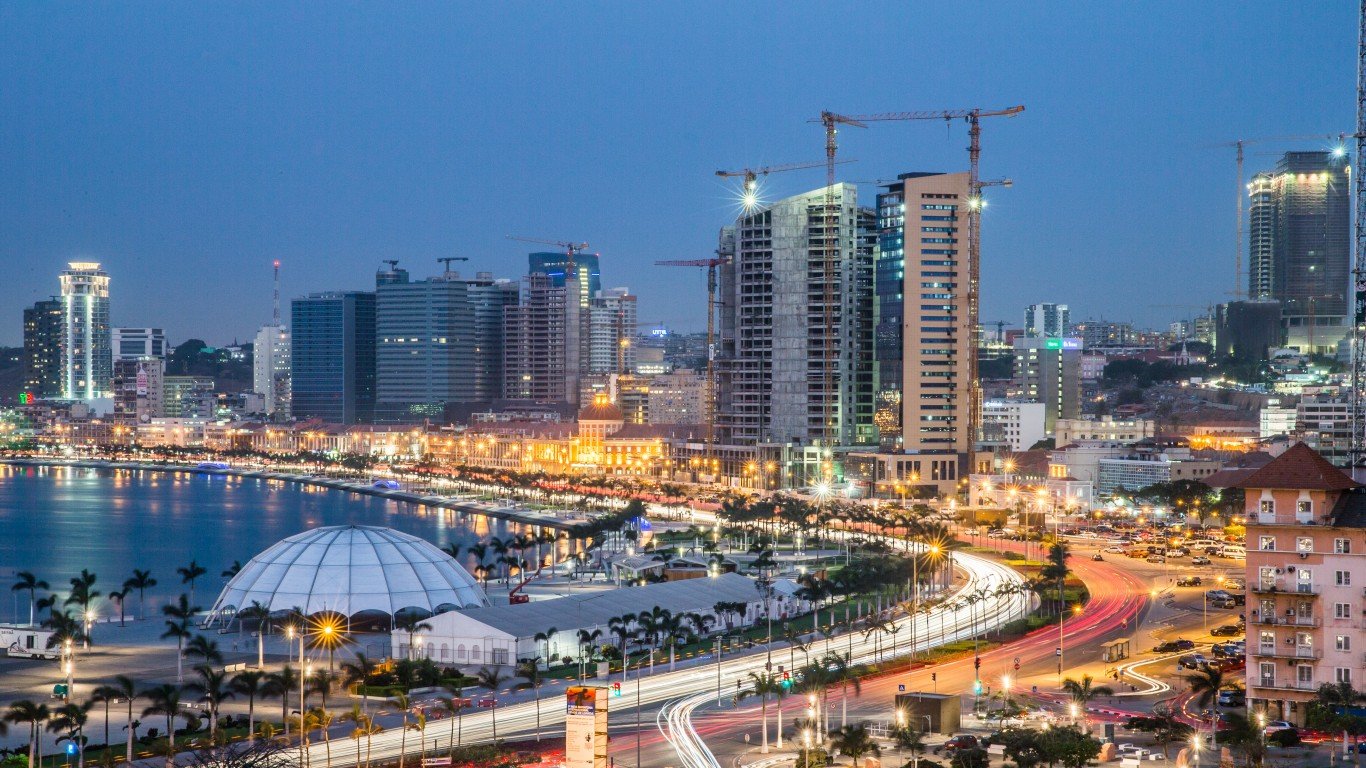
20. Luanda, Angola
> Population (2021): 8.63 million
More than half of this southwestern African nation’s population lives in coastal settlements or floodplains vulnerable to flooding. In Luanda, the capital, municipal risk maps reveal that more than 12% of the population lives in sections subject to coastal inundation and erosion. Efforts to ameliorate the situation are complicated by the fact that 98% of the nation’s meteorological stations, along with their climate records, were destroyed during the long Angolan civil war (1975-2002).
[in-text-ad]
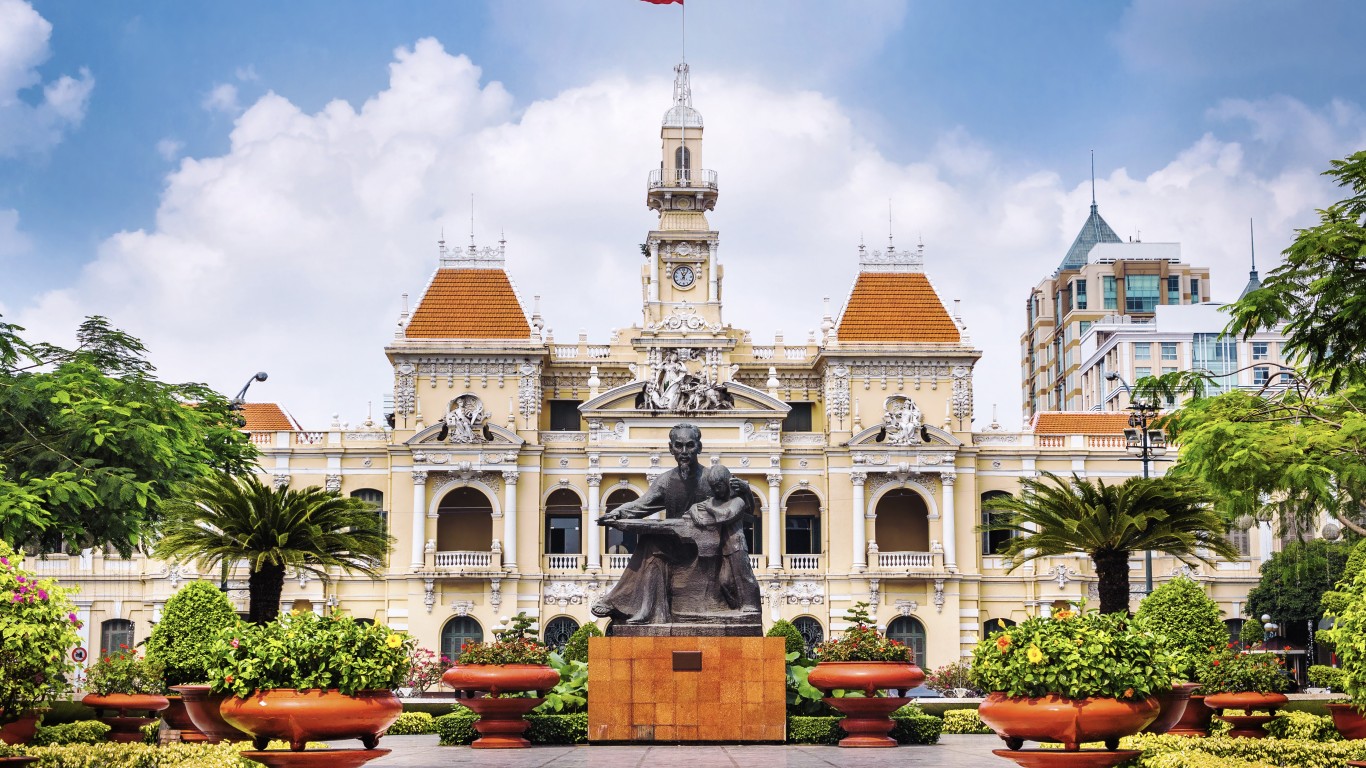
19. Ho Chi Minh City, Vietnam
> Population (2021): 8.84 million
The unregulated and inconsistently monitored extraction of groundwater from under the city for domestic use has caused the former Saigon to sink noticeably since the late 1990s. Overflow from the Saigon and Dong Nai rivers, along with high tides in the South China Sea and frequent heavy rainfall add up to make this one of the 10 world cities most vulnerable to inundation.

18. Nanjing, China
> Population (2021): 9.14 million
On the Yangtze River, northwest of Suzhou and Shanghai, Nanjing is a major economic, educational, and cultural capital, as well as being home to the world’s largest inland port. Like other cities in the Yangtze River Delta, it has flooded frequently and is considered at increased risk of catastrophic flooding as sea levels rise.

17. London, United Kingdom
> Population (2021): 9.43 million
At least a million Londoners live in a low-lying floodplain, and an estimated 16% of residential and business properties are said to be at risk from flooding of the Thames, a tidal river. The Thames Barrier, which can hold off tidal waters, was opened in 1984 and functions efficiently to keep the city above water. But it is now called into service much more frequently than originally intended, and some experts worry that it’s being overworked and will soon need considerable updating and strengthening.
[in-text-ad-2]
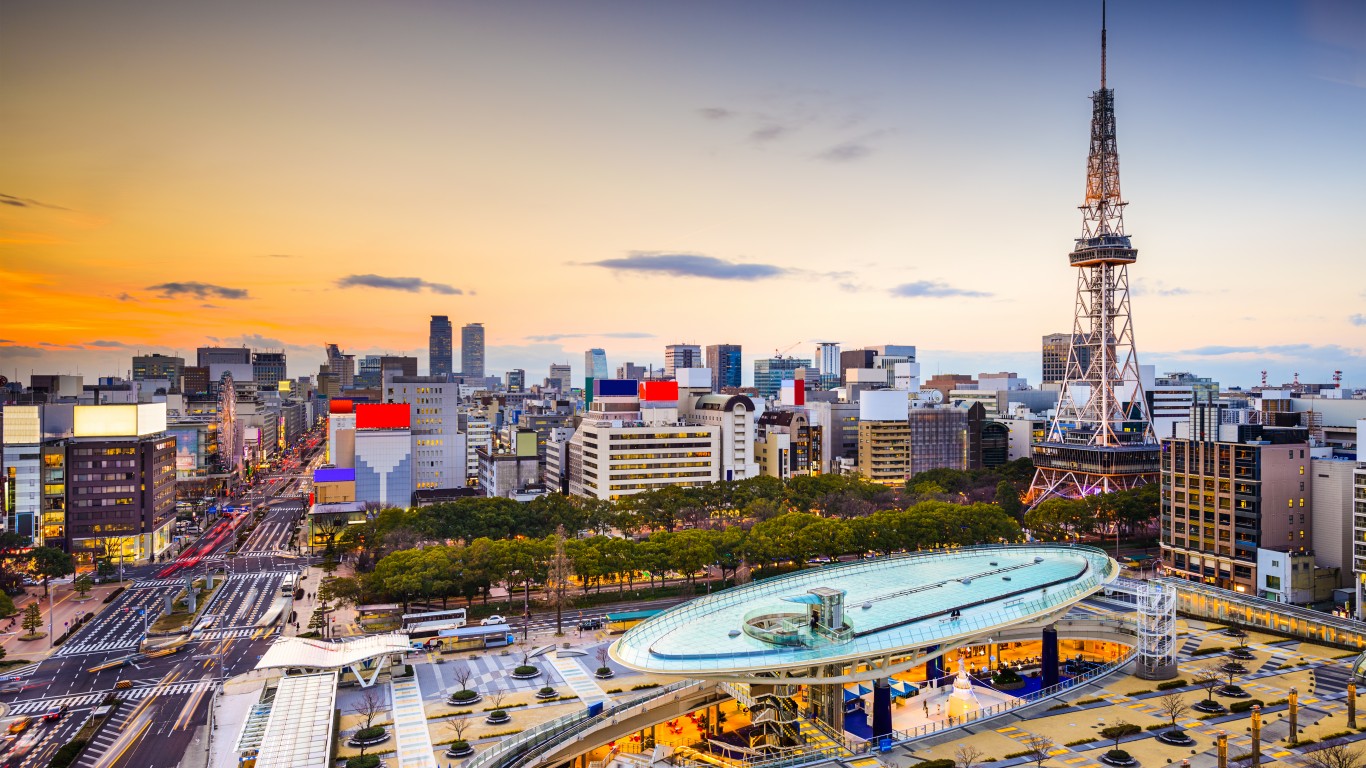
16. Nagoya, Japan
> Population (2021): 9.57 million
Japan’s fourth-largest city, important for its port and its manufacturing industries, is situated in a low-lying area near three rivers — the Kiso and the Shonai and the manmade (but 410-year-old) Hori. Floods have been a minor problem thus far, but could become a major one if sea level rise reaches two meters (just over six-and-a-half feet) as some projections suggest it could by 2100.

15. Bangkok, Thailand
> Population (2021): 10.72 million
Bangkok was built on a bed of soft clay stretching over swampland, so has been sinking gradually for much of its history. Last year, scientists announced that portions of the city were now as much as a meter (3.28 feet) lower than they were originally. Some sources predict that Bangkok will be totally submerged by 2200.
[in-text-ad]
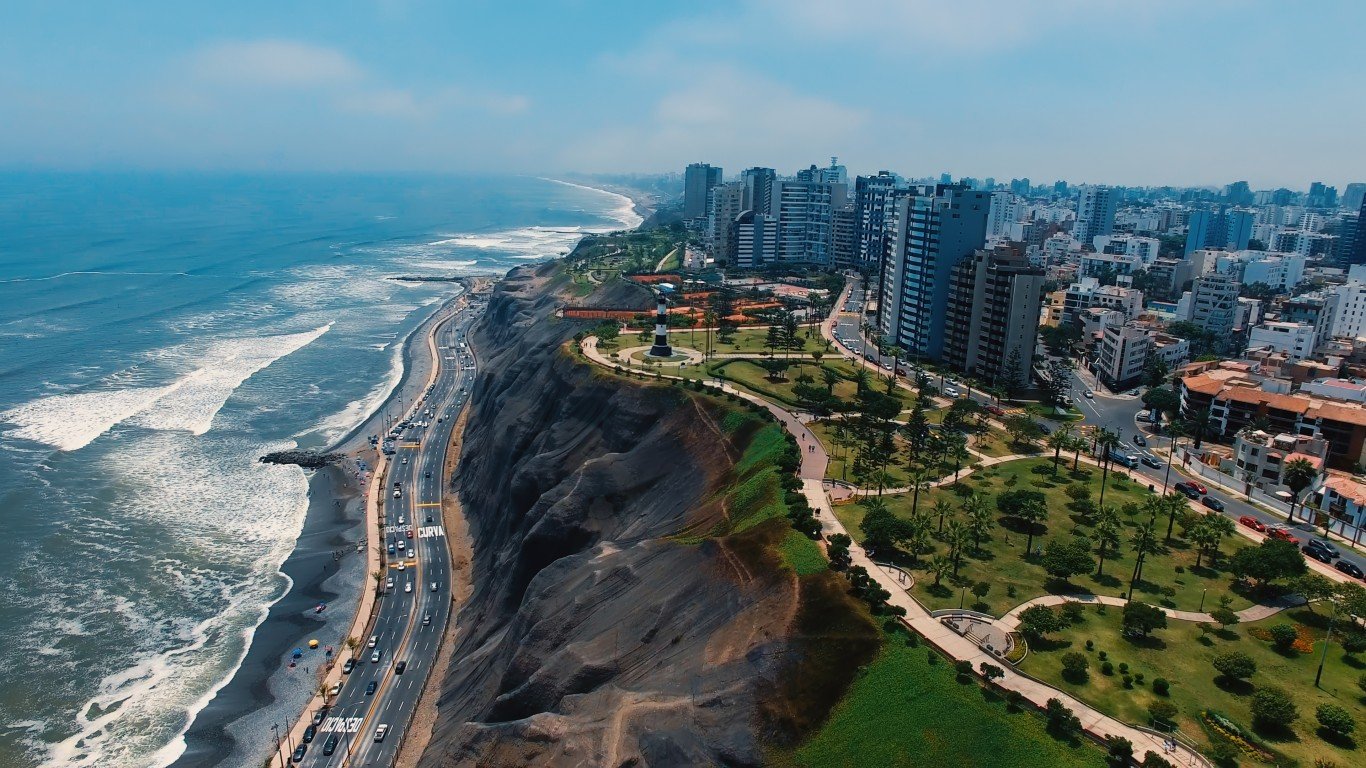
14. Lima, Peru
> Population (2021): 10.88 million
In 2012, the Peruvian Navy’s oceanography department warned that significant stretches of the coastline around Lima could be rendered uninhabitable by rising seas and eroding beaches by 2092. Another consequence of global warming for Lima to worry about is the melting of tropical glaciers in the nearby Cordillera Blanca region, which supply hydroelectric power and drinking water to the Peruvian capital.
13. Jakarta, Indonesia
> Population (2021): 10.92 million
The Indonesian capital is threatened not only by rising seas but by sinking land, as groundwater is pumped out of the aquifers beneath the city. Because of the environmental threat to Jakarta, the country’s president, Joko Widodo, is promoting a controversial and as yet unfunded plan to move the capital to a new location on the island of Borneo.

12. Chennai (Madras), India
> Population (2021): 11.24 million
Formerly known as Madras, this city is the sixth-most populous in India. Last year, a study by the nation’s National Centre for Coastal Research predicted that any property within 100 meters (about 109 yards) of Chennai’s coastline will be permanently inundated by 2025 if sea level rise continues at its current rate. By 2100, the study added, waters could reach a full kilometer (over six-tenths of a mile) from the seaside.
[in-text-ad-2]
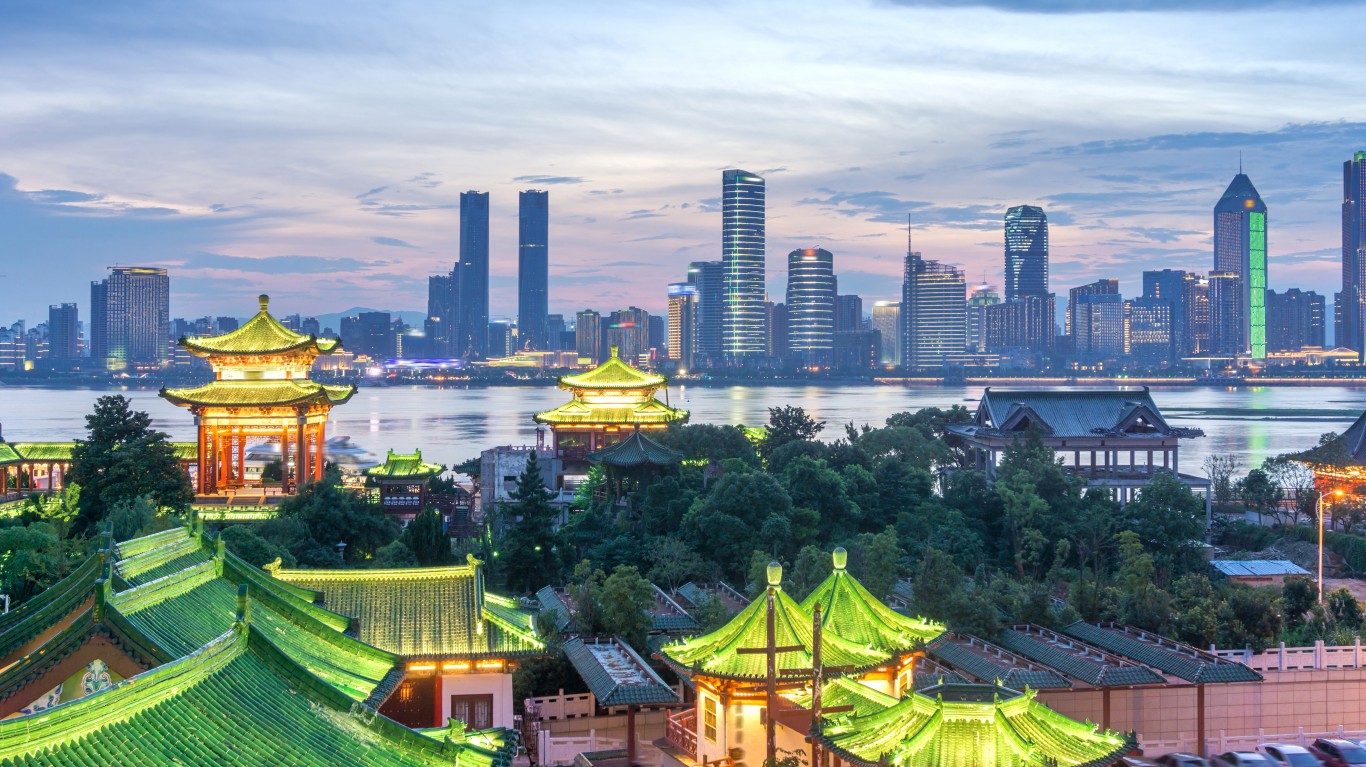
11. Shenzhen, China
> Population (2021): 12.59 million
This one-time small fishing village in the Pearl River Delta is now a major tech hub with a population that may greatly exceed the official figure due to unregistered migrants, commuters, and short-term residents. Buffeted by super-typhoons and subject to surges from the South China Sea, the city “does not have the knowledge and resources, and is far from getting ready to react to the threats of sea level rise and other climate-induced changes at the scale being forecasted by scientists,” according to a 2019 paper from the Fábos Conference on Landscape and Greenway Planning.
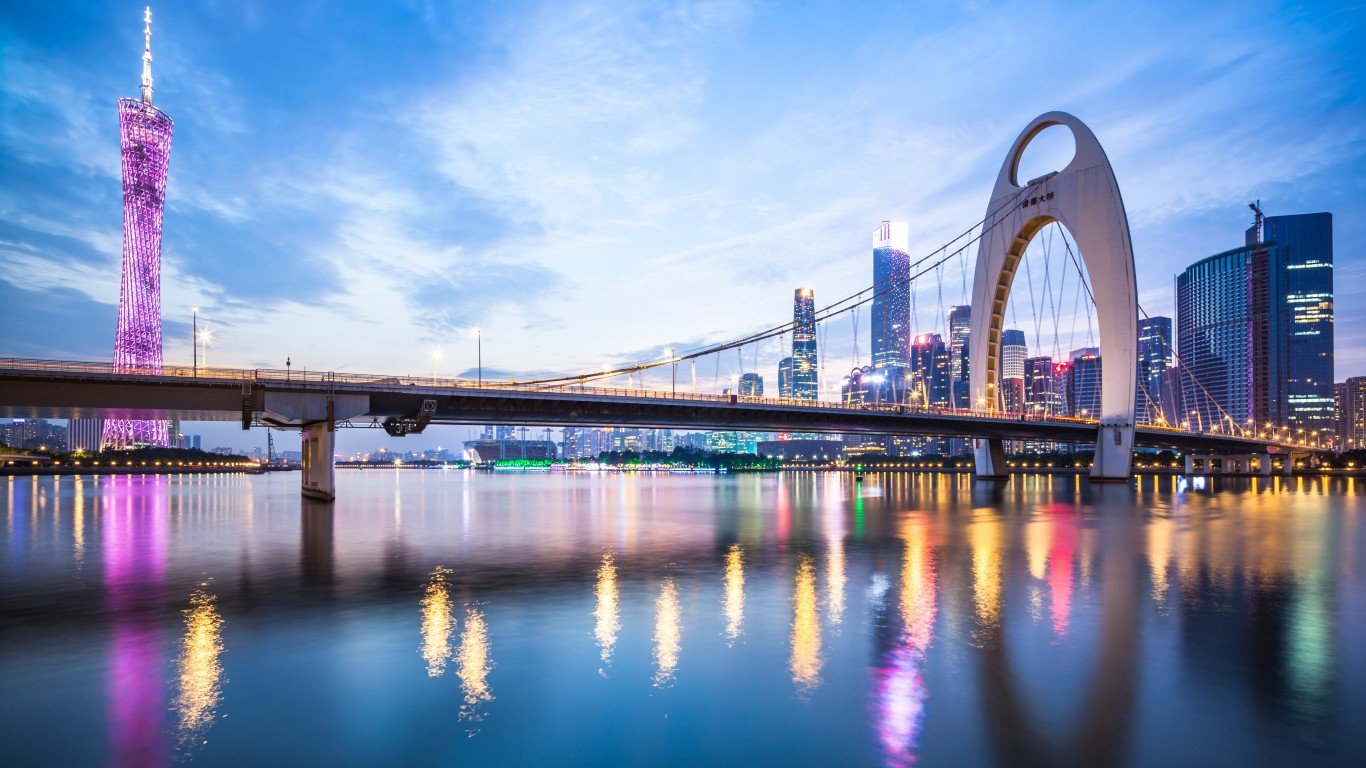
10. Guangzhou, China
> Population (2021): 13.64 million
Once known as Canton, this ancient port and transportation center in the Pearl River Delta is one of the most populous cities in China. The Ocean Health Index classifies about a fifth of its urban area as being at high or extreme risk for the effects of sea level rise. There are almost 2,000 miles of seawalls and other flood barriers protecting Guangzhou and other delta metropolises, but if water levels rise by a foot, many of them would be overwhelmed.
[in-text-ad]
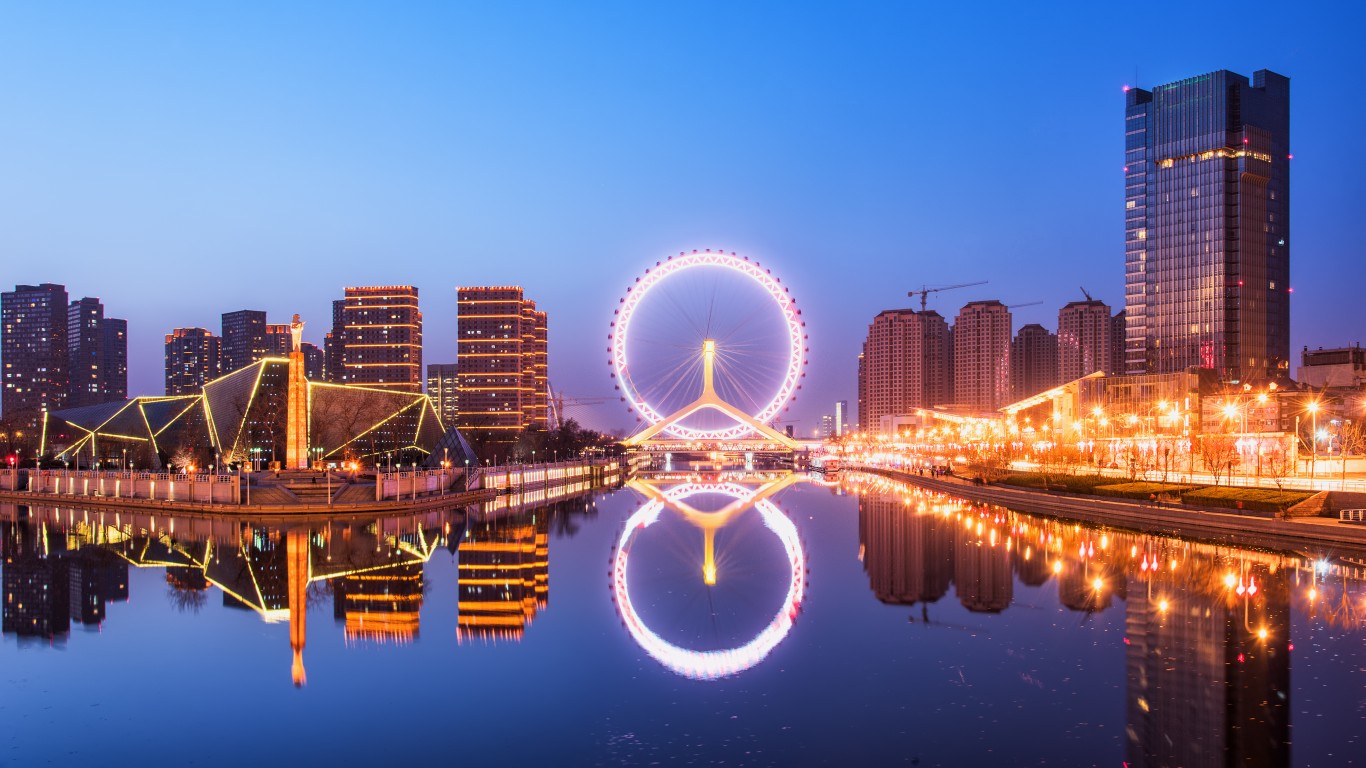
9. Tianjin, China
> Population (2021): 13.79 million
Some 285 Fortune 500 companies have offices in this major economic hub in the low-lying basin of the Hai River, a tributary of the Yangtze. Noting that “It already suffers from flooding during heavy downpours, and rising water levels will hamper its struggling drainage systems,” Earth.Org estimates that in a worst-case scenario, as much as 82% of its population could be displaced by 2100.
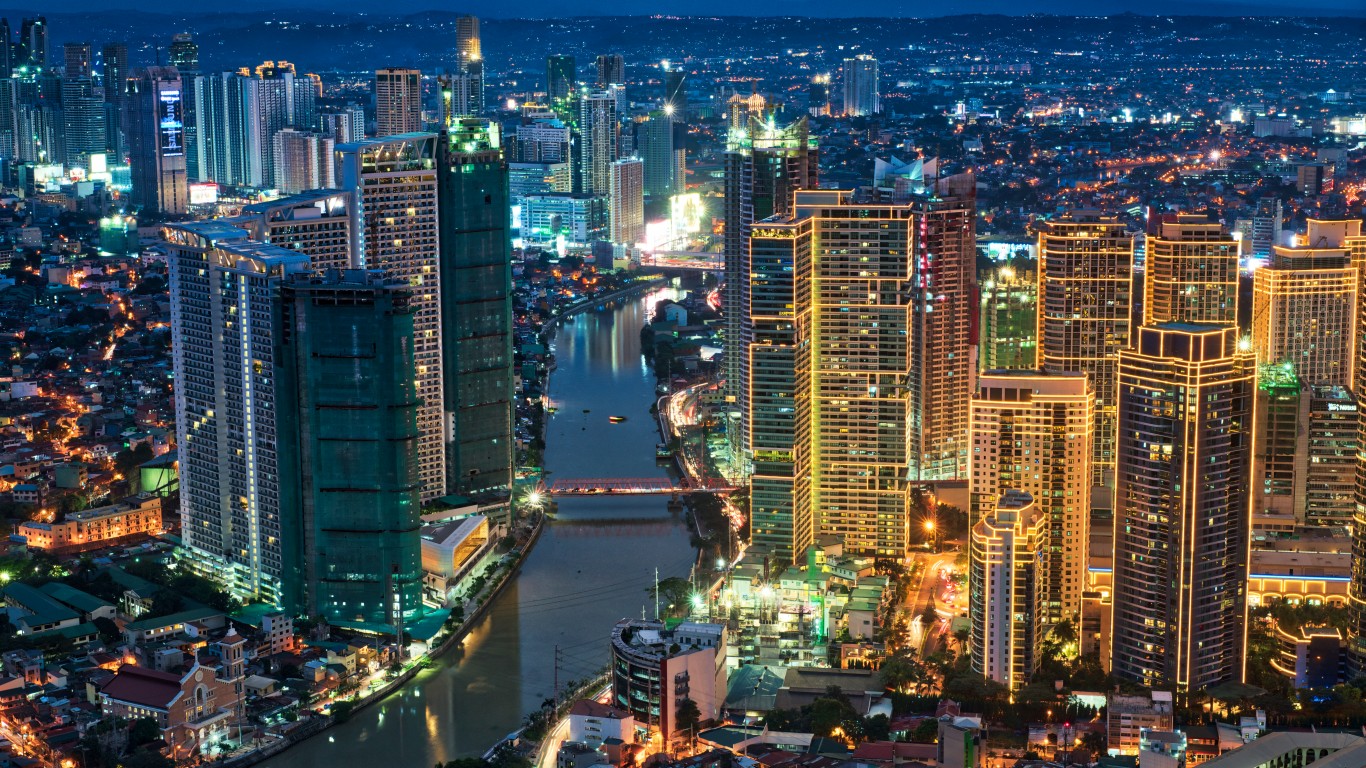
8. Manila, Philippines
> Population (2021): 14.16 million
Residents of the Philippines capital are no strangers to flooding, both from seawater and from heavy rainfall — the country endures more than 20 typhoons a year — that can’t be adequately drained. Depletion of aquifers beneath the city has sunken parts of Manila below sea level — and the level of Manila Bay is rising four times faster than the worldwide average. A majority of the city’s residents could be seriously affected by flooding as early as 2030.
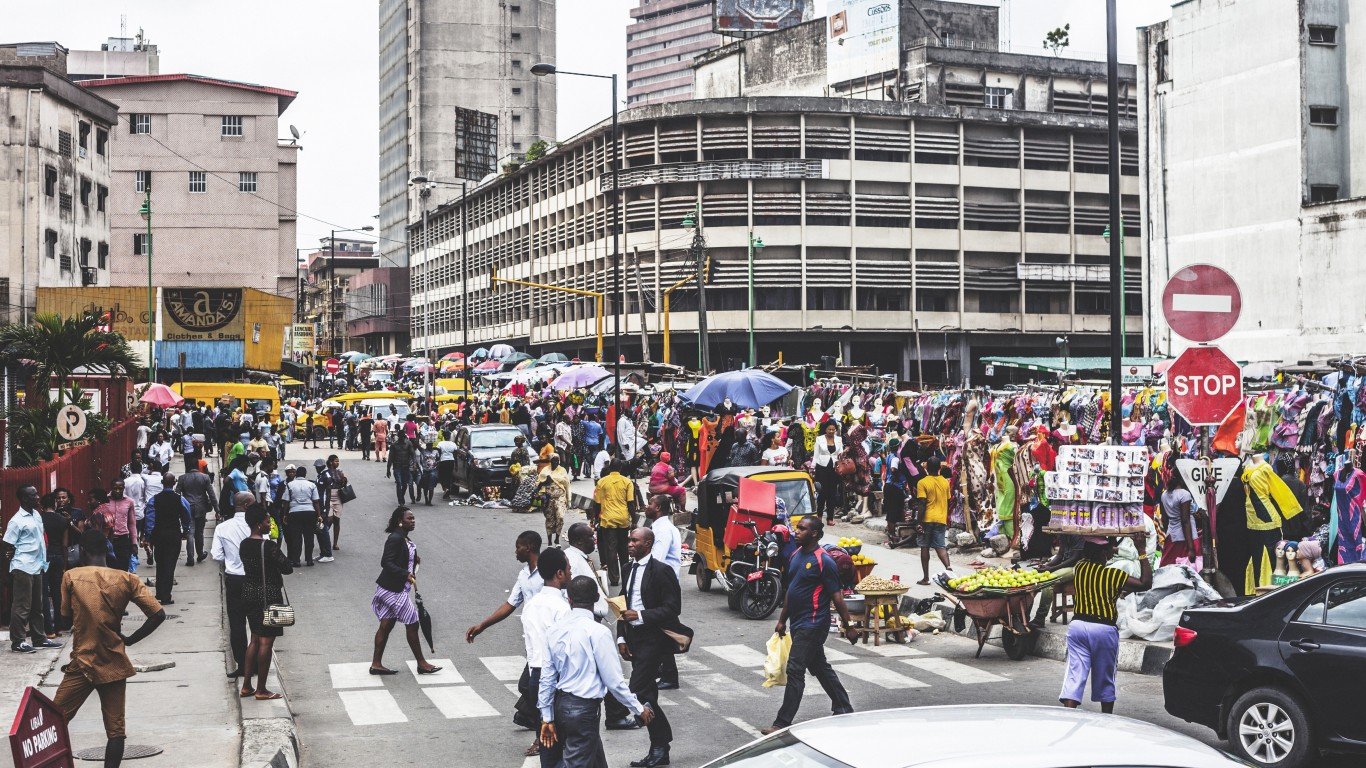
7. Lagos, Nigeria
> Population (2021): 14.86 million
The economic capital of Nigeria, the most populous country in Africa, Lagos is in danger not only because of rising sea level and run-off from rivers, but also because its drainage systems are in disrepair and often clogged with debris. “In Lagos, the run-off is not well managed,” an environmental expert told The Guardian. According to Earth.Org, 32% of the city’s population could be displaced by 2100.
[in-text-ad-2]
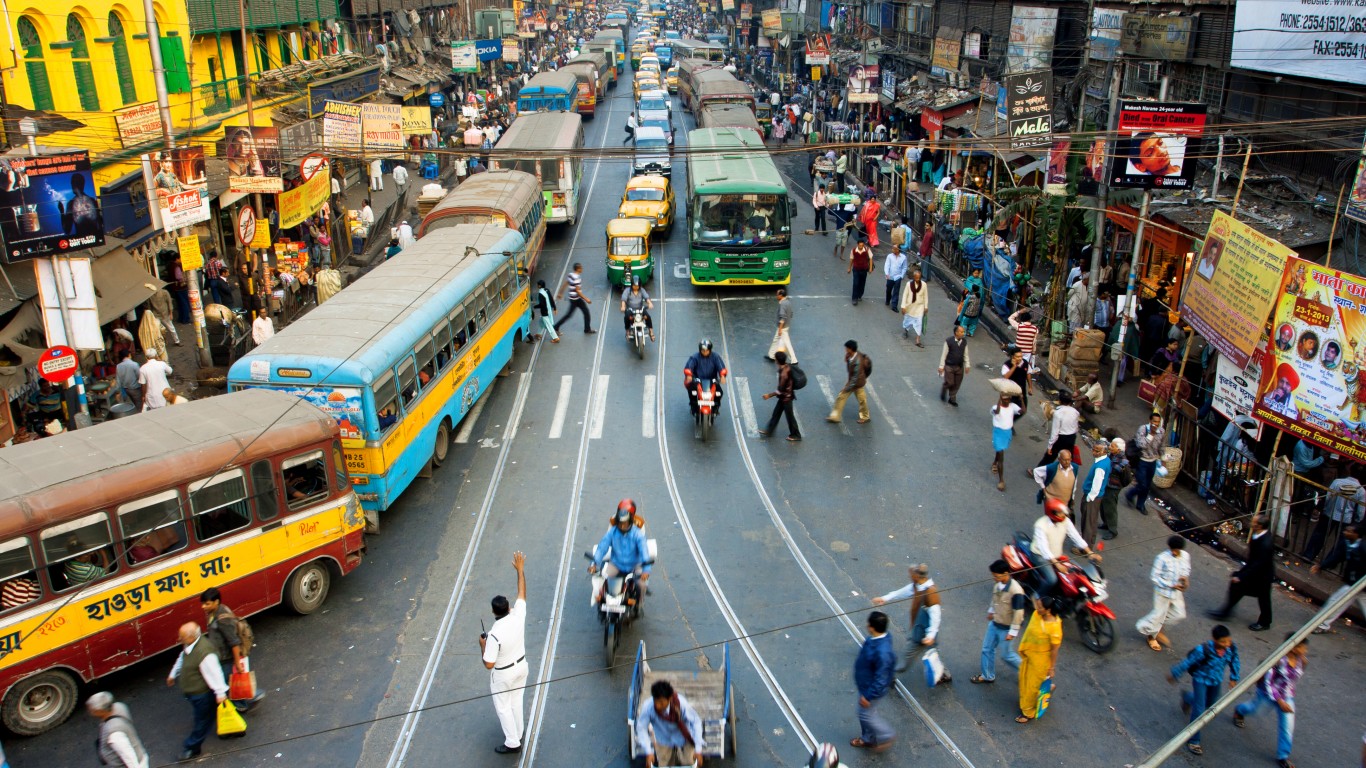
6. Kolkata (Calcutta), India
> Population (2021): 14.97 million
Two years ago, the Times of India identified Kolkata as being potentially “the worst-hit among Indian coastal cities as sea levels rise due to global warming.” By 2050, the Times added, virtually the entire city and its suburbs would be at risk of annual flooding “affecting many more million people than previously believed.” Almost the entire population could be forced from their homes.

5. Buenos Aires, Argentina
> Population (2021): 15.26 million
Most if not all of the half million people living along the mouth of the Río de la Plata will have to be relocated by 2100 if current trends continue. The river is particularly vulnerable to storm surges, especially when strong winds and high tides correspond. In addition, summer temperatures in the city are rising faster than the global average, increasing the risk of thermal expansion of nearby waters, potentially raising levels even higher than they would be otherwise.
[in-text-ad]
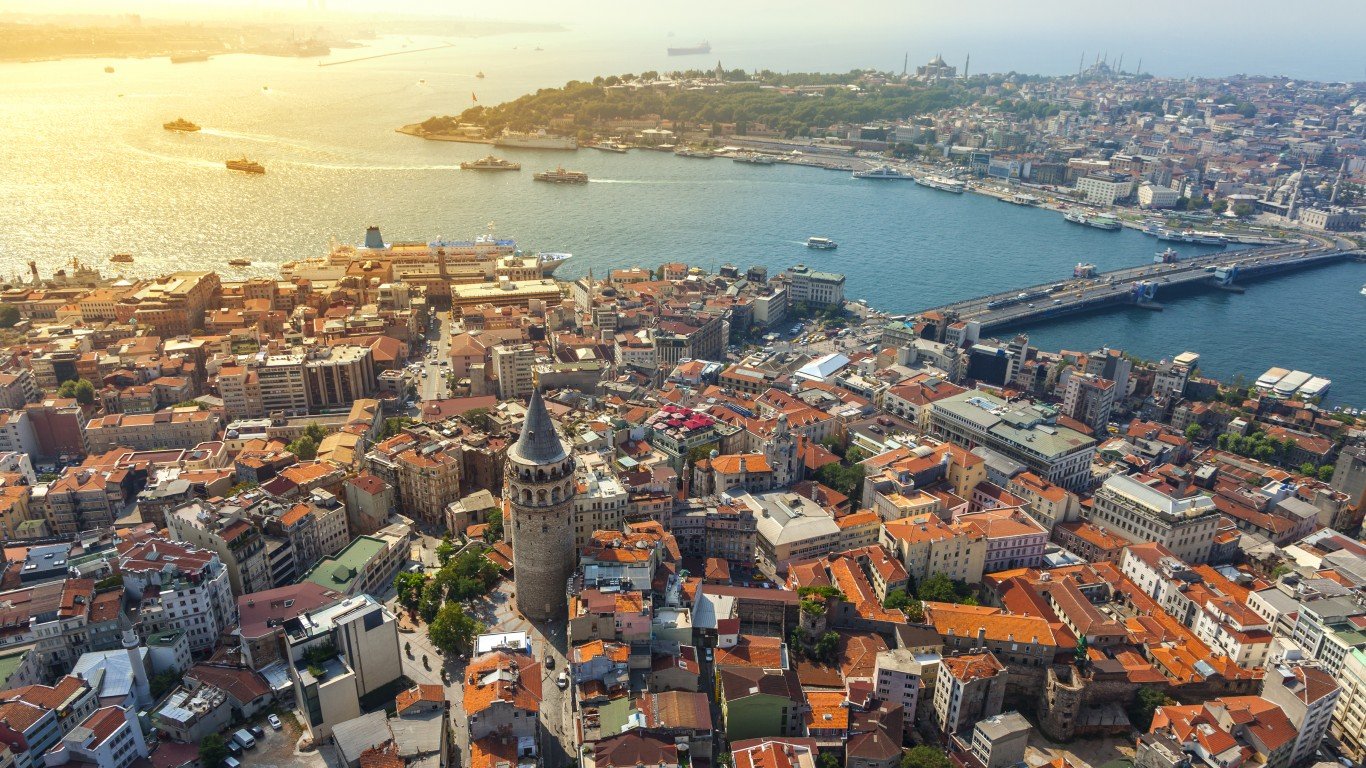
4. Istanbul, Turkey
> Population (2021): 15.42 million
The waters of the Bosphorus Strait, separating the European and Asian portions of this fabled city, could rise an astonishing 10 to 16 feet by the end of the 21st century, according to a report by the Turkish parliament’s Global Climate Change Research Commission. In addition to rendering buildings — including centuries-old historical sites — near the strait uninhabitable, saltwater intrusion could salinize Terkos Lake, the major source of the city’s drinking water.
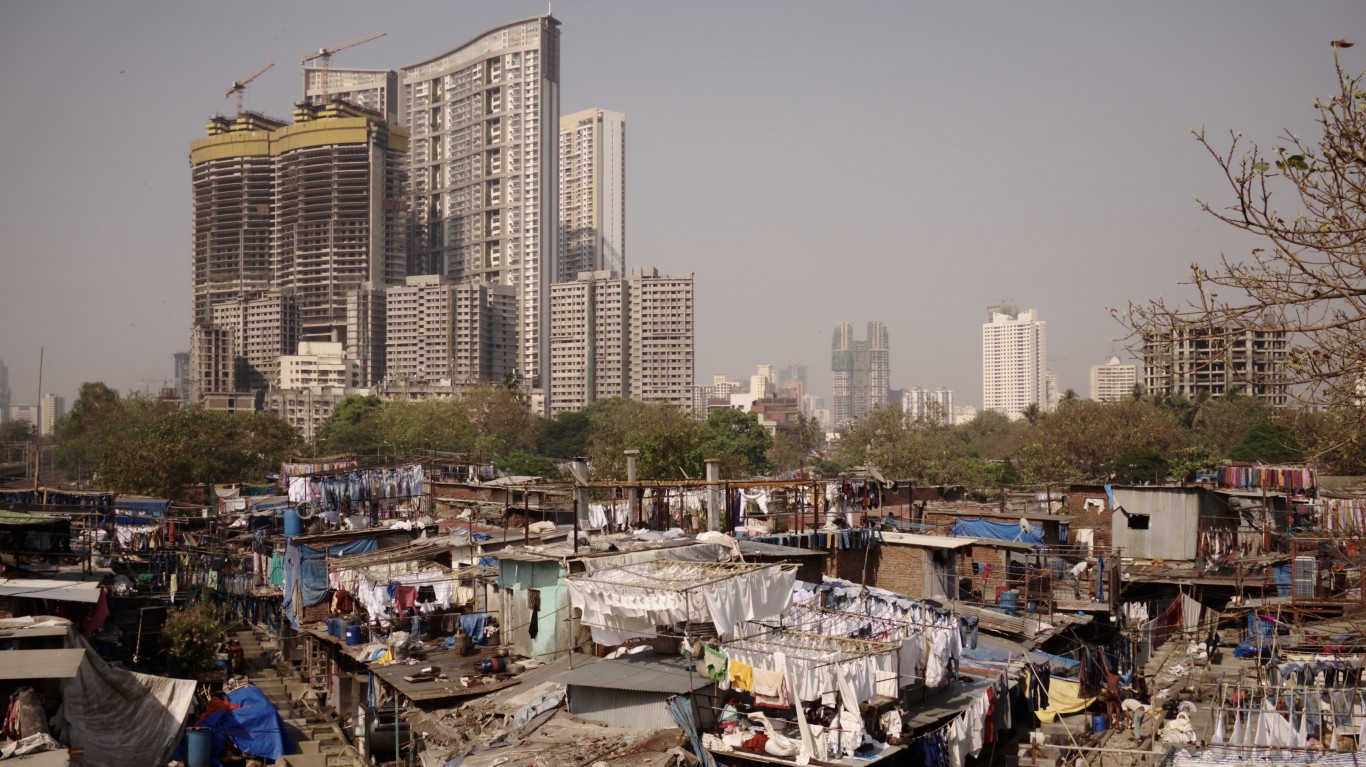
3. Mumbai (Bombay), India
> Population (2021): 20.67 million
One study ranks Mumbai as the city second-most threatened by sea level rise and extreme weather events (after Guangzhou in China). Uncontrolled development with poorly equipped drainage systems, which would be completely overwhelmed by a combination of sea level rise and particularly heavy downpour. Earth.Org estimates that at least three million people could be displaced.

2. Dhaka, Bangladesh
> Population (2021): 21.74 million
The low-lying densely populated capital of Bangladesh will lose about 17% of its land area to permanent flooding by 2050, according to scientists, leaving millions homeless. Its position on the Ganges Delta, the largest river delta in the world, leaves it particularly vulnerable.
[in-text-ad-2]
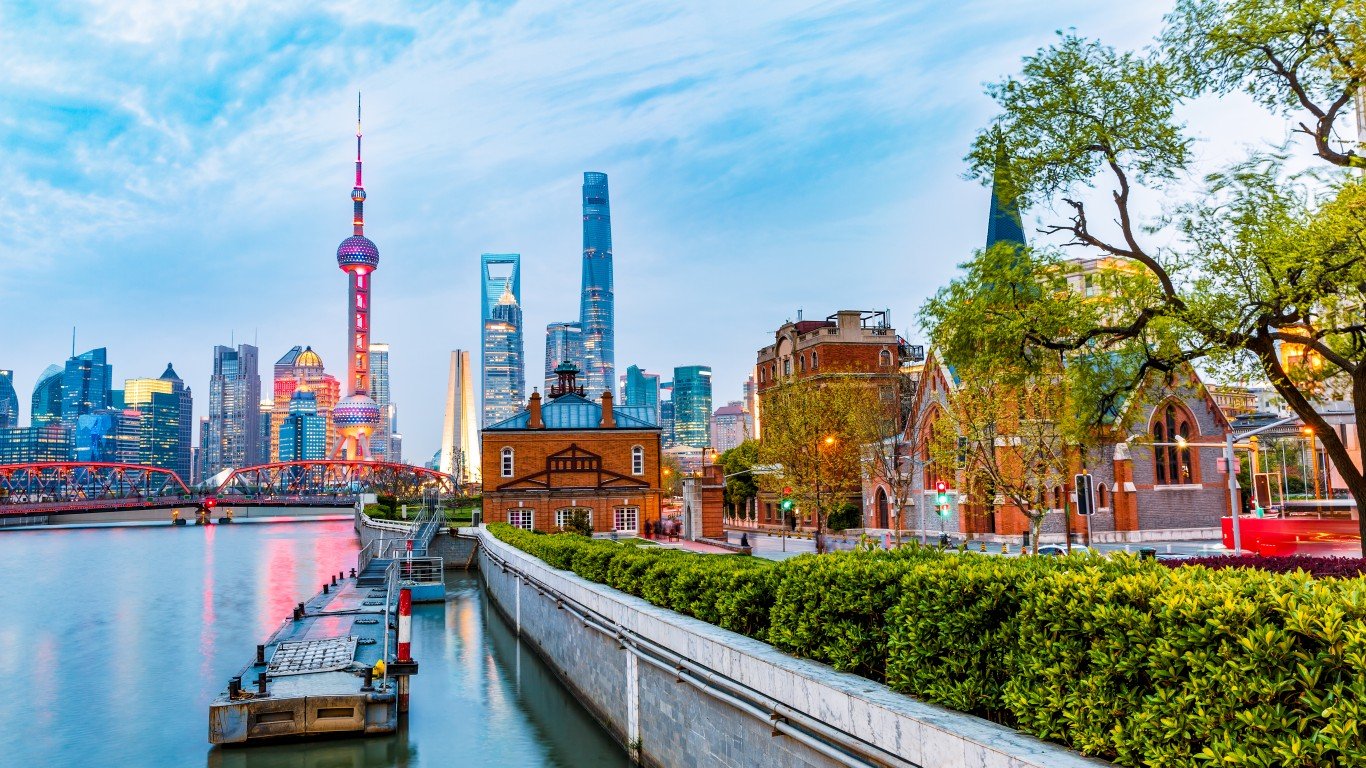
1. Shanghai, China
> Population (2021): 27.8 million
Earth.Org points out that Shanghai, one of the world’s most populous cities, “sits on the Yangtze River estuary on low-lying, soft, sandy soilâ¦[which] spells trouble.” It is surrounded on three sides not only by the estuary but also by the East China Sea and Hangzhou Bay. Despite extensive seawalls, it is said that the sinking of the land still puts at least half the city’s population at risk. One study goes further, estimating that more than 20 million people in the Shanghai region are living on land that could be permanently subsumed by 2100.
Take This Retirement Quiz To Get Matched With An Advisor Now (Sponsored)
Are you ready for retirement? Planning for retirement can be overwhelming, that’s why it could be a good idea to speak to a fiduciary financial advisor about your goals today.
Start by taking this retirement quiz right here from SmartAsset that will match you with up to 3 financial advisors that serve your area and beyond in 5 minutes. Smart Asset is now matching over 50,000 people a month.
Click here now to get started.
Thank you for reading! Have some feedback for us?
Contact the 24/7 Wall St. editorial team.
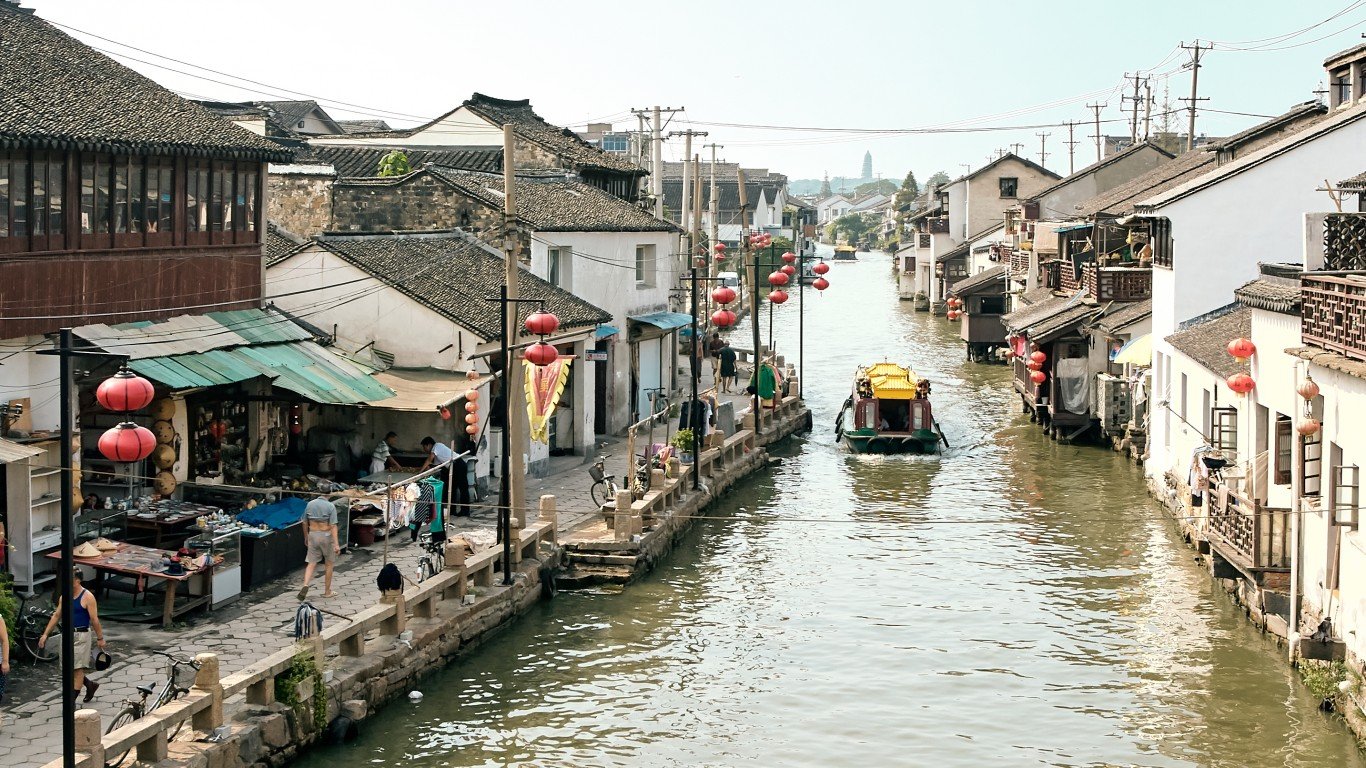
 24/7 Wall St.
24/7 Wall St.
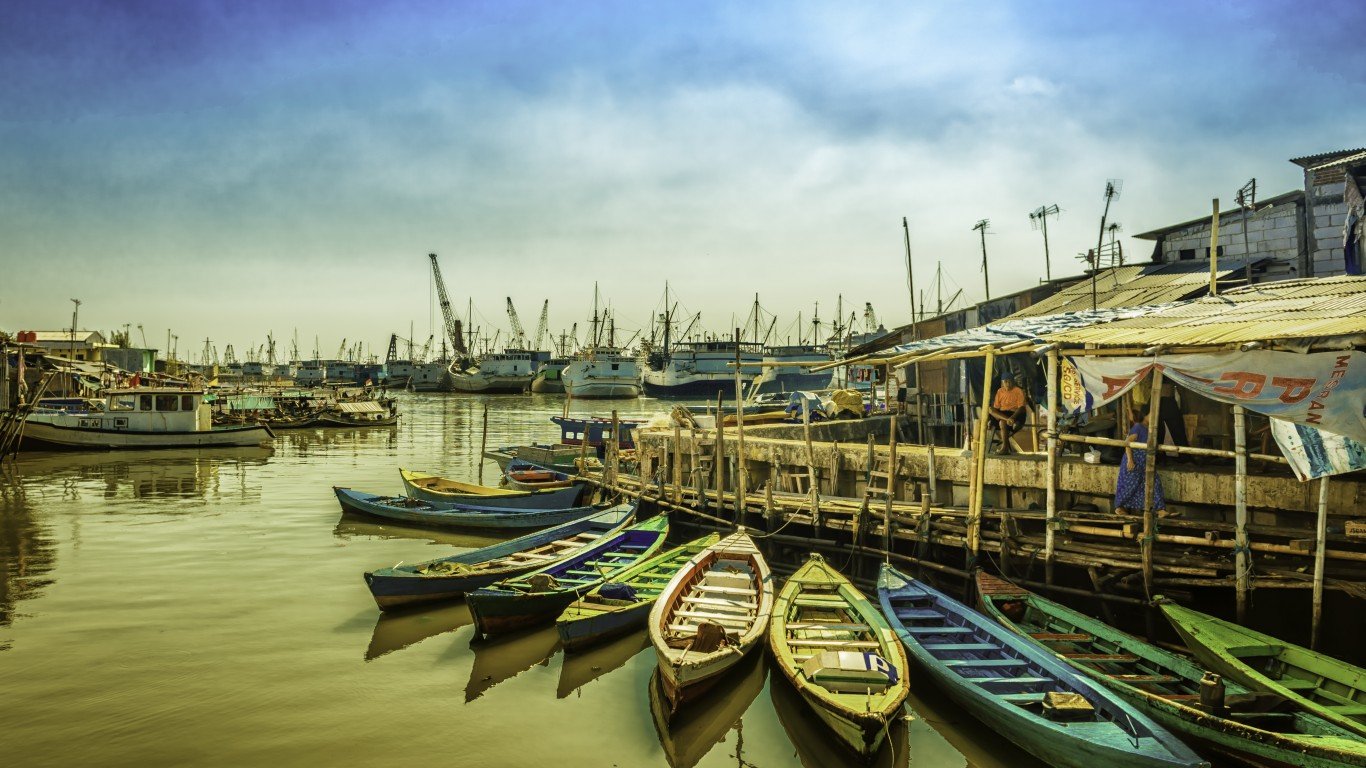
 24/7 Wall St.
24/7 Wall St.


